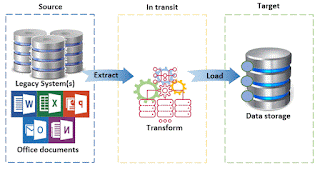
|
|
Prompt Engineering Series |
Introduction
As Artificial Intelligence (AI) systems increasingly make decisions that affect human lives - from approving loans to diagnosing illnesses and driving cars - the question of accountability becomes urgent and complex. Who should be held responsible when a machine makes a mistake, causes harm, or acts in a way that defies ethical norms?
This isn’t just a legal or technical issue - it’s a moral one. Machines don’t possess intent, conscience, or moral agency. Yet their decisions can have real-world consequences. So who bears the burden of accountability?
The Human Chain of Responsibility
At the core of any machine decision lies a chain of human involvement. This includes:
- Developers: They design the algorithms, train the models, and define the parameters. If a machine behaves in a biased or harmful way due to flawed design, developers may bear partial responsibility.
- Organizations: Companies that deploy AI systems are responsible for how those systems are used. They choose the context, set the goals, and determine the level of oversight. If a bank uses an AI model that discriminates against certain applicants, the institution - not the machine - is accountable.
- Regulators: Governments and oversight bodies play a role in setting standards and enforcing compliance. If regulations are vague or outdated, accountability may be diffused or unclear.
Users: In some cases, end-users may misuse or misunderstand AI systems. For example, relying blindly on a chatbot for medical advice without verifying its accuracy could shift some responsibility to the user.
Can Machines Be Accountable?
Legally and philosophically, machines cannot be held accountable in the same way humans are. They lack consciousness, intent, and the capacity to understand consequences. However, some argue for a form of 'functional accountability' - where machines are treated as agents within a system, and their actions are traceable and auditable.
This leads to the concept of algorithmic transparency. If a machine’s decision-making process is documented and explainable, it becomes easier to assign responsibility. But many AI systems operate as 'black boxes', making it difficult to pinpoint where things went wrong.
The Problem of Diffused Blame
One of the biggest challenges is the diffusion of blame. In complex AI systems, responsibility is often spread across multiple actors. This can lead to a scenario where no one feels fully accountable - a phenomenon known as the 'responsibility gap'.
For example, if a self-driving car causes an accident, who is to blame? The manufacturer? The software developer? The owner? The data provider? Without clear frameworks, accountability becomes a game of finger-pointing.
Toward Ethical Accountability
To navigate this landscape, we need new models of accountability that reflect the realities of machine decision-making:
- Shared Responsibility: Recognize that accountability may be distributed across stakeholders. This requires collaboration and clear documentation at every stage of development and deployment.
- Ethical Design: Embed ethical principles into AI systems from the start. This includes fairness, transparency, and safety. Developers should anticipate potential harms and build safeguards.
- Legal Frameworks: Governments must update laws to reflect the role of AI in decision-making. This includes liability rules, consumer protections, and standards for algorithmic auditing.
- Human Oversight: Machines should not operate in isolation. Human-in-the-loop systems ensure that critical decisions are reviewed and validated by people.
Final Thought: Accountability Is Human
Ultimately, accountability for machine decisions must remain a human responsibility. Machines are tools - powerful, complex, and sometimes opaque - but they are not moral agents. As we entrust them with more authority, we must also take greater care in how we design, deploy, and monitor their actions.
The future of AI is not just about smarter machines - it’s about wiser humans. And that begins with owning the consequences of the technologies we create.
Just try the prompt on Copilot or your favorite AI-powered assistant! Have you got a different/similar result? How big or important is the difference? Any other thoughts?
Just share the link to the post with me and I'll add it to this post as a resource!
Disclaimer: The whole text was generated by Copilot (under Windows 11) at the first attempt. This is just an experiment to evaluate feature's ability to answer standard general questions, independently on whether they are correctly or incorrectly posed. Moreover, the answers may reflect hallucinations and other types of inconsistent or incorrect reasoning.











